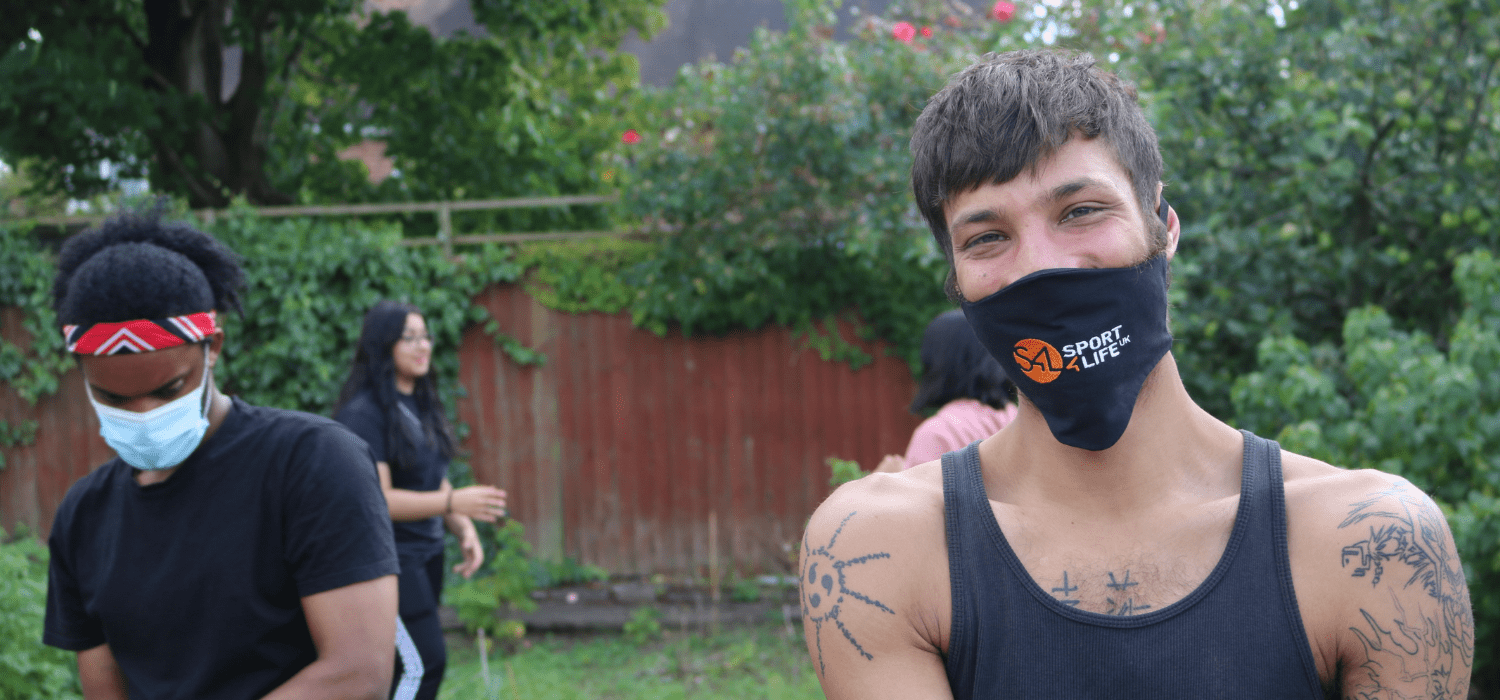The Big Question for #IDSDP2021: What have you learned about sport for development during the Covid-19 pandemic?
by Tom Clarke-Forrest, Founder & CEO, Sport 4 Life UK
Following the UK’s return of sport on 29th March, for the first time in over three months, I played competitively in team sport. It was a long time coming, and it didn’t disappoint – a cathartic release of energy and anxiety, a re-fuelling of self-esteem, a much needed endorphins hit, and overdue team camaraderie.
These social benefits of sport and physical activity are well documented and understood, and form a key part of our delivery at Sport 4 Life UK (S4L). But the last year – with three lockdowns, inclusive of long-term bans on sport – has seen a significant reduction in participation.
So what challenges have arisen as a result of this reduction? And what challenges have there been for the sport-for-development (and indeed wider) sector and community? And with lockdowns now hopefully behind us, what role can the sector play in our national recovery?

The challenges
Over three million people were less active last year. And the majority of young people failed to meet the recommended 60 minutes of daily exercise – highlighting a huge issue on the younger generation’s engagement in sport and physical activity. We have also seen the onset of a mental health emergency, with over 60% of adults and young people reporting a deterioration in their mental health during lockdowns. The pandemic has also exacerbated many inequalities within sport. Sport England’s research has shown that stubborn inequalities in activity levels between different groups have persisted since restrictions began in March 2020. Those who have found it hardest to stay active include people from lower socio-economic groups, people with long-term health conditions, and Black adults and Asian adults.
And in the organisations providing and delivering sport and physical activity services, there have been notable challenges. Research from the Sport for Development Coalition found the pandemic has had a significant impact on sport for development organisations across funding, forced reduction and adaptation of delivery, and in engaging participants – many of whom rely significantly on the services provided by the network.
Outside of health, wellbeing, and sport, there are other significant challenges facing communities. Of particular note – and in line with S4L’s key services – is youth employment. Young people have been hit first and hardest in the labour market by this pandemic. Youth unemployment is likely to remain stubbornly high throughout this year and next year, particularly among young people with few or no qualifications. Since the Covid crisis began, nearly half (46%) of the total fall in employment across the economy has been among those aged 16 to 24. Meanwhile, the number of 16 to 24-year-olds who have been unemployed for at least six months has jumped by almost 50,000 in the three months to November 2020 compared to the same period a year earlier, suggesting that young people are already finding it much harder to secure sustainable work. Youth unemployment increased by 85% in the West Midlands (from March – December 2020). Prince’s Trust’s Youth Index 2021 Report showed that 60% of young people say that getting a new job feels “impossible now”, 1 in 4 claiming the pandemic has “destroyed their career aspirations” and 25% of 16-25 year olds feeling “unable to cope with life” – increasing to a staggering 40% amongst NEETs (not in employment, education or training).
The contribution of the sport-for-development sector in tackling these challenges
As part of the Sport for Development Coalition’s #AdaptSupportRespond initiative, Sport 4 Life UK shared its update on how it adapted its services during lockdown to continue to support individuals and communities when they needed us the most. You can read this here.
Reflections and consultation since this piece have evidenced the benefit and power of our sports-themed services. We experienced increased participation of young people (especially during the ‘non-lockdown’ periods when sport was permissible) to levels greater than in 2019, and continued to support young people on pathways into long-term outcomes and sustained impact. 82% of our young people reported that our services and activities during the pandemic were essential and needed. To meet the growing demand and need, we also expanded our lockdown services into new areas, including Sandwell, Coventry and Walsall.
I’ve also seen life-affirming examples of the sector transcending its ‘traditional’ and more ‘typical’ purpose and delivery, to meet the growing needs of the communities it serves (there are too many fantastic organisations to name!). Many have delivered critical care packages, to provide food and resources to those most in-need. And I’m proud that at S4L we were able to do the same – providing IT equipment to young people experiencing digital poverty, and delivering sport and physical activity equipment to those unable to get active in and around their home. This enabled our young people to continue to engage, stay active, and gain a competitive advantage in an increasingly competitive and challenging employment and labour market.
The landscape, movement and future of the sector
Not only has the sector proven its worth in getting the nation more active (and the benefits this brings), it has changed lives and communities along the way. The road ahead is long, challenging and unknown, but I firmly believe that sport-for-development organisations have a vital role to play in our journey back to normal and back to a more equal, fairer, healthier and productive nation.
In particular, I’d like to highlight the sector’s collaboration, workforce and impact as three key ‘movements’ and key focus areas for the future.
Collaboration: With funding and resources being hit, there’s never been a more pertinent time to come together and achieve more with less. With a plethora of skills and experiences within the sector, there’s efficiency, productivity and added-value to be found in working with others – both within and outside the sector. At S4L, we’ve been proud to be part of the ‘Youth Employment Group’ – the UK’s largest coalition of youth employment experts, coming together to drive the UK’s response, work with government and policy makers, and ensure young people (especially those from disadvantaged backgrounds) are best supported during Covid-19 and its aftermath. Since April, the YEG has been advocating for full and inclusive employment for young people, successfully lobbying government for an ‘Opportunity Guarantee’ for young people, and more recently calling for an extension to the ‘KickStart’ scheme. This is one (of countless) examples of a sport-for-development organisation coming together with other organisations for the greater good.
Workforce: Staff (and volunteers) within the sector have continued to provide front-line services throughout the pandemic and its lockdowns. For the workforce to continue to support those most in-need, we must ensure they are also suitably supported. This includes those leading organisations through these turbulent times. At S4L, we’ve taken steps to prioritise staff wellbeing – we’ve got a new ‘Wellbeing Committee’, have invested in a new ‘EAP’ (Employee Assistance Programme) service, have come together weekly through staff ‘huddles’, have prioritised wellbeing through line management processes and have come together as a team, in-person, when safe and secure to do so. The sector – like all others – also needs to move with the times to allow for more flexible work-flows and patterns, and a more positive blended balance of working from home and in the office as we move out of lockdown.
Impact: Finally, and most importantly, the sector’s efforts need to be aligned to need. As shown above, the pandemic will widen existing inequalities and disproportionately impact marginalised groups. S4L is proud to be working with those furthest away from the job market, and this will remain a key strategic objective into future years. We must take a need-led and evidenced-led approach in aligning the sector’s efforts and impact where it’s most needed, using sport as a powerful vehicle and conduit to achieve lasting social change – in whatever area that might be. And so for those with power, responsibility and influence, this is where the efforts – and funding – must flow.

